
week 3: computer-controlled cutting
week 4: electronics production
week 5: 3D scanning & printing
week 8: computer-controlled machining
week 13: networking & communications
week 14: interface & application programming
week 15: applications & implications
week 16: mechanical design & machine design
The first part of this week's assignment is to design and print a small object that can only be made additively (i.e. via 3D printing). I'm still quite new to 3D design, so this assignment is challenging my design skills as well.
My idea is to make a simple cat toy that is a spherical or cylindrical lattice with a small ball inside to rattle around as it rolls.

I decided to try OpenSCAD this time, for a couple of reasons. One is just the idea of trying something I haven't done before, but I also like the idea of representing shapes wth something analogous to coding. I haven't found the process of manipulating shapes graphically to be very intuitive, so maybe using commands might work better for me. To start, I made a simplified version of the cylindrical cat toy, where the bars are straight instead of twisting around the cylinder.
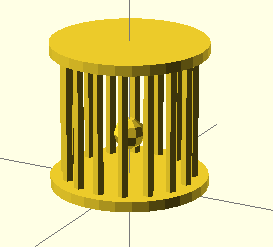
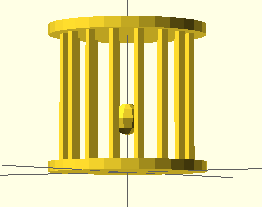
Then, because I wouldn't sure if the top would be able to print, I redesigned it in two pieces that would fit together. I'm not sure if this violates the "can only be printed additively" part of the assignment...
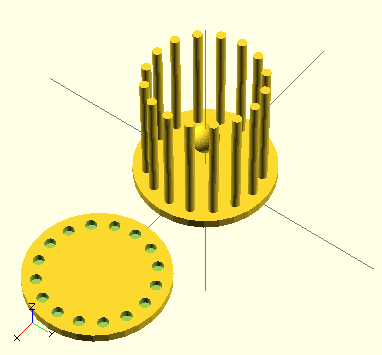
I decided to try printing the original version of the cat toy first, just to see if it would work.
It did work, sort of. It printed, but with so many supports that taking them out was something akin to an archaeological dig, and I broke quite a few of them.
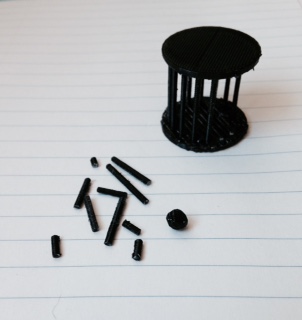
The last thing I did with printing was to try to add the twisting to the bars around the cat toy. OpenSCAD has a twist function, but when I first tried it - using linear extrude to make the bars and adding a twist - the twist wasn't visible. It turned out the key step was to add a translate after the linear extrude. I'm not 100% sure why this worked, but it did. The other change I made was to make a module of all the bars together and twist that, instead of twisting each bar individually.
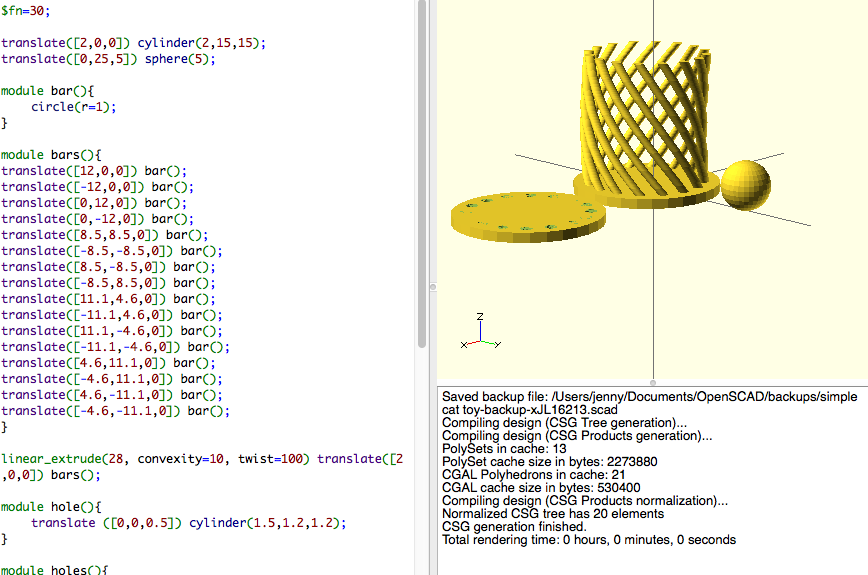
This one came out just as I hoped when I printed it. There were no supports needed; the angle of the twist was small enough that the bars stayed up. I was able to attach the pieces together (though it did require gluing) and give it to the cat.
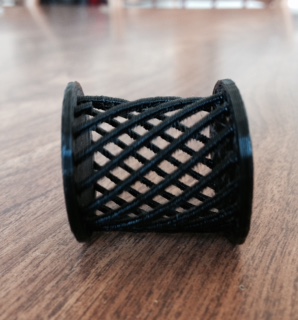
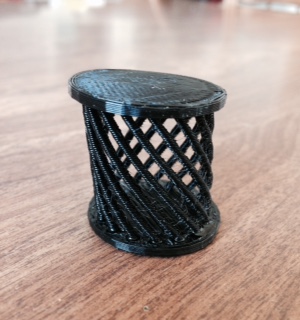
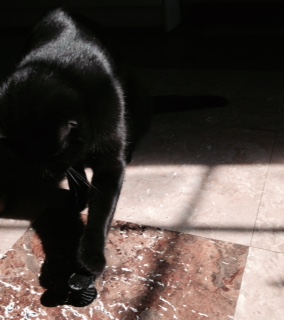
The second part of the assignment for this week was to scan something in 3D. I used the 123D Catch app on my phone to scan that Rhode Island staple, a cup of Dunkin Donuts iced coffee.

I first tried Meshlab to clean it up so it could be printed, but the program crashed repeatedly, so I switched to Meshmixer. This was more stable, but it was pretty difficult to get the model to be nice-looking. I managed to cut off the extra pieces that had been scanned (part of my rug, coffee table, etc.) and I worked on using the sculpting tools to smooth out the model. I found there's a balance between getting it to not be so lumpy and smoothing so much off that it's not recognizable. I never really found that balance...
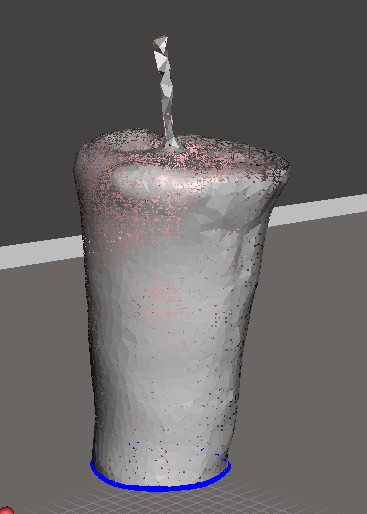
Jenny Kostka Fab Academy 2015
